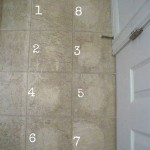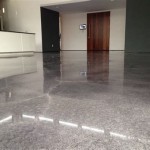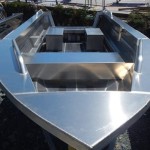Essential Considerations for Bamboo Flooring Water Damage
Bamboo flooring has become increasingly popular due to its durability and eco-friendliness. However, like any flooring material, it can be susceptible to water damage, which can compromise its appearance and structural integrity. Understanding the causes, consequences, and mitigation strategies for bamboo flooring water damage is crucial for maintaining its longevity and beauty.
Causes of Bamboo Flooring Water Damage
Water damage to bamboo flooring can result from various sources, including:
- Flooding due to natural disasters or plumbing malfunctions
- Leaks from appliances, pipes, or the roof
- Condensation from humid environments or inadequate ventilation
- Spills from everyday activities, such as mopping or pet accidents
Consequences of Bamboo Flooring Water Damage
Water damage on bamboo flooring can manifest in several ways:
- Discoloration and Staining: Water can seep into the bamboo's pores, causing discoloration or staining.
- Warping and Buckling: Excessive moisture can cause the bamboo planks to expand and contract unevenly, leading to warping or buckling.
- Mold and Mildew: Damp conditions provide a favorable environment for mold and mildew growth, which can damage the flooring and pose health risks.
- Structural Weakness: Severe water damage can compromise the structural integrity of the bamboo flooring, making it prone to cracks or breakage.
Mitigation Strategies for Bamboo Flooring Water Damage
Prompt action is essential to mitigate water damage on bamboo flooring:
- Identify and Stop the Source: Immediately locate the source of water and take steps to stop the leak or spill.
- Remove Standing Water: Use towels or a wet/dry vacuum to remove any standing water on the flooring surface.
- Dry the Floor: Open windows or use fans to ventilate the area and promote natural drying. Consider using a dehumidifier to remove excess moisture from the air.
- Contact a Professional: If the water damage is extensive or has caused structural damage, consult a professional flooring contractor for repairs.
Prevention Tips
Preventing water damage on bamboo flooring is essential:
- Regular Cleaning and Maintenance: Clean bamboo flooring regularly using recommended cleaning products to remove spills and prevent moisture buildup.
- Avoid Excessive Moisture: Use damp mops for cleaning and avoid flooding or spilling liquids on the flooring.
- Protective Mats: Place mats under appliances, plants, or furniture that may leak or cause condensation.
- Proper Ventilation: Ensure adequate ventilation in rooms with bamboo flooring to prevent moisture buildup and mold growth.
By understanding the causes, consequences, and mitigation strategies for bamboo flooring water damage, homeowners can effectively maintain the beauty and longevity of their flooring. Prompt action and proper preventive measures are essential to minimize the risk of water damage and preserve the integrity of bamboo flooring.

Water Damage How To Protect Your Bamboo Floor Oriental

Problems With Bamboo Flooring Water Damage The Company

Problems With Bamboo Flooring Moisture Damage The Company

Is Bamboo Flooring Water Resistant The Company

Problems With Bamboo Flooring Water Damage The Company

Electrodry Bamboo Floor Restoration Gorgeous Floors In 1 Day Without The Sanding Mess

Bamboo Flooring Performance Floor Central

Our Home A Flooring Surprise

Problems With Hardwood Flooring Water Damage Ambience

Restoring Bamboo Furniture And Floors That Have Suffered Water Damage The Bazaar
Related Posts








